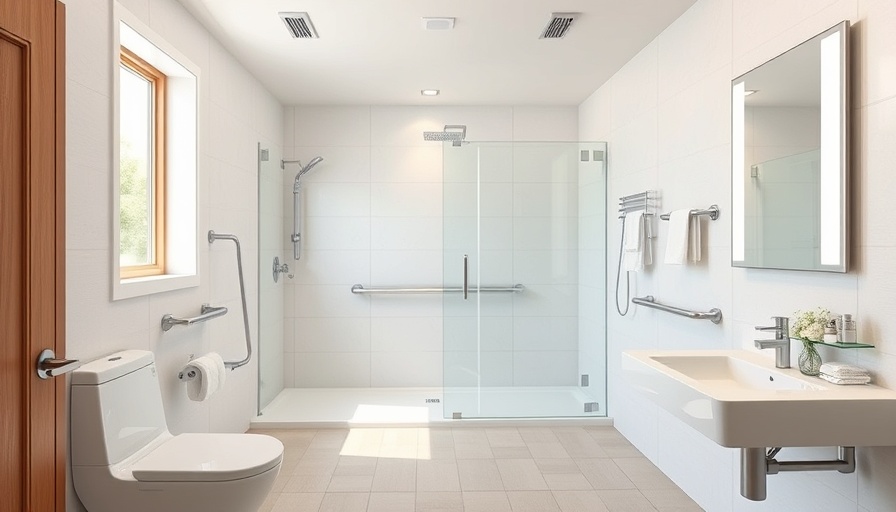
Why Accessible Bathrooms Are a Necessity
Bathrooms are essential spaces in any home or public venue, and accessibility should be integral to their design. For those aged 55 and above, particularly women who often make household decisions, understanding the local building codes for accessible bathrooms is paramount. The need for these facilities extends beyond legal compliance; it reflects a commitment to inclusivity and respect for all individuals, including those with disabilities.
The Foundation of Accessibility: Building Codes
Accessible bathroom codes stem from the Americans with Disabilities Act (ADA) and other federal regulations, yet every state and locality may have distinct codes. The ADA emphasizes that public restrooms must allow free and comfortable access for everyone. Imagine a grandparent trying to navigate a cramped bathroom stall—we all must champion standards that preclude such challenges. It starts with understanding essential specifics, such as door widths, stall sizes, and the placement of grab bars.
Key Elements of Building Codes in Detail
One crucial aspect of local building codes is their detailed specifications, which include requirements that ensure facilities cater to a diverse set of needs. For instance, toilet stalls should support average clearances for various mobility aids. Additionally, sink heights should accommodate wheelchair users. These regulations create bathroom environments that are not just compliant but welcoming and user-friendly. Oddly enough, while the ADA serves as a baseline, some jurisdictions boast stricter codes that enhance accessibility even further—these must be upheld to ensure full compliance.
Navigating Local Variability in Regulations
One challenge faced by contractors and builders is the wide variability in local codes. Someone overseeing construction in urban areas might experience vastly different requirements than someone working in suburban or rural locales. This inconsistency often leads to confusion, necessitating thorough research prior to any project. Misunderstandings related to these codes can lead to costly redesigns, making industry knowledge crucial.
Overcoming Challenges in Accessibility
Older buildings often present distinct challenges when it comes to retrofitting for accessibility. Many elderly properties simply don't possess enough space for compliance with modern standards. As a result, the design can suffer, compromising both safety and user experience. Additionally, the misconceptions surrounding accessible design can prevent homeowners and contractors alike from effectively meeting some of these essential codes.
Fostering Knowledge and Awareness
A significant barrier to compliant and accessible bathroom design is a lack of understanding among builders and homeowners regarding existing regulations. Workshops focused on educating contractors about accessibility standards can bridge this gap. Regular training is not just helpful—it's increasingly necessary for all parties involved to grasp this evolving field. We all share the responsibility to ensure accessible environments for everyone.
Embracing Inclusivity in Design
Adopting accessible codes is simply about offering dignity and respect to everyone—regardless of physical ability. Imagine a world where no parent struggles to assist their child in public restrooms or where seniors can access facilities without fear of injury. When we prioritize accessibility in our building codes, we're not just obeying regulations; we are uplifting our community. This collective effort in adherence to standards nurtures relationships, fosters trust, and promotes safety, ultimately creating spaces where everyone can thrive.
To cement this commitment to inclusivity, it’s time for homeowners and builders alike to educate themselves about these crucial codes. From understanding regulatory requirements to collaborating with local building officials, embracing accessibility can lead to significant improvements in community well-being. Let’s rally around these guidelines and advocate for robust changes in the spaces we share.
 Add Row
Add Row  Add
Add 




Write A Comment